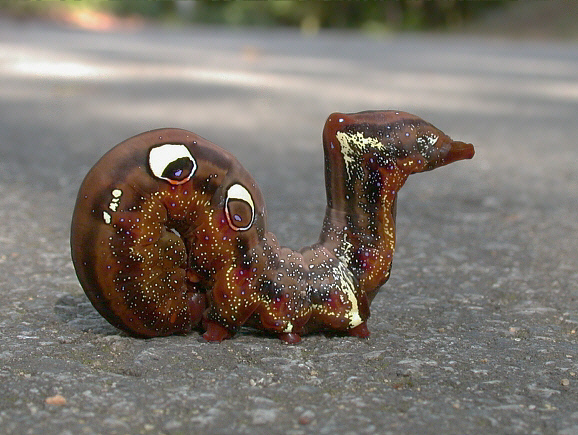
Introduction
There are between 25-48 Othreis species depending on taxonomic viewpoint. Some authorities for example include all Othreis species within another genus Eudocima. The taxon has representatives in almost all regions of the world.
Othreis (Eudocima) fullonia is distributed from India to Malaysia, Borneo, the Philippines, Palawan, Sulawesi, New Guinea and north-east Australia. There also exists a specimen in the Bavarian State Museum allegedly from Ghana but this may be mislabelled.
Habitats
This species is found in forests, orchards, parks, gardens and many other habitats at altitudes between sea level and about 1000m.
Lifecycle
The very strange looking larva feeds on creepers including Tinospora, Tiliacora, Stephania and Triclisia (Menispermaceae); and on Erythrina (Fabaceae).
The larvae normally rest on the underside of leaves where they go unnoticed by predators, but if threatened in any way they react by lifting the tail and arching up and bloating the front segments. They then rock aggressively from side to side, “threatening” the perceived enemy with prominent false eyes.
Adult
The forewings of the moth are marked in a bark-like pattern, while the hindwings are bright yellow, marked with black. This is an example of “flash coloration”, a defence against avian predators. If a foraging bird accidentally disturbs it the moth takes flight, and the bird chases after what appears to be a bright yellow moth, but as soon as Othreis settles on a tree trunk it covers the hindwings beneath the bark-like forewings and becomes virtually invisible. The bird continues to look for the yellow “search image” and the moth survives.
The adult moth is a serious pest in Asia, feeding on the juices of many commercially grown fruits. Its proboscis is about 2.5cms long, and strong enough to pierce the skin of apples, apricots, bananas, figs, grapefruit, guava, kiwifruit, mangoes, melons, oranges, papaya, passion fruit, peaches, pineapple, star fruit and tomatoes. Fruit damaged by the moth becomes soft, mushy and unsaleable. Additionally the moth is a known vector of Oospora citri, a fungus that rots the fruit.
